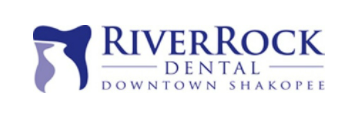Are you Brushing your Teeth the Wrong Way
You think you might be brushing your teeth wrong? You want to know how to brush it the right way? Yes? If so, you came to the right place; be not afraid as you will not brush your teeth in the wrong way again.
Tooth brushing is the most common form of oral hygiene practice. Everyone wants to have healthy teeth and gums. Proper tooth brushing techniques can help you avoid oral diseases like cavities and gum disease.
The following are several tooth brushing mistakes people commonly do and how to fix them.
Using the Wrong Style of Tooth Brush
Most use the wrong kind of brush for their teeth. The tooth brush should be comfortable for you; it should not be too big or too small that you do not have to strain your mouth during brushing. Also, using a tooth brush with hard and stiff bristles can hurt the gums; soft-bristles tooth brushes are enough to brush off the soft plaque on the teeth.
Also replace your tooth brush regularly. After three to four months, a tooth brush loses its effectiveness.
Your Dentist should be able to tell you the exact kind of toothbrush you should be using.
Brushing Not Enough or Too Much
Many brush their teeth thirty seconds or less, falling short of the recommended two to three minutes of brushing. Regular brushing of two to three minutes two to three times a day is best to keep the bacteria in the mouth in check. But brushing too much is not healthy as it can erode the tooth enamel and can cause tooth sensitivity.
Not Flossing
Dental floss can significantly increase the effectiveness of brushing the teeth by opening up the gaps between the teeth. Flossing before brushing the teeth allows the fluoride in the toothpaste to seep in much better.
Brushing in a Rushed Way—Back and Forth, All Around
Many brush all their teeth at the same time. That is a big no-no. Brush in a circular motion focusing on few teeth at a time. Brush systematically; start with your left side then the middle and then the right. Also, when you brush, angle the brush at a 45-degree angle which allows you to clean under the gums and effectively clean the mouth.
You also do not need to brush too rushed and certainly not in an aggressive manner. Most food particles residue on the teeth can be can be taken out even with a small amount force exerted on the tooth brush.
Rinsing the Mouth Just After Brushing
Many use mouth wash just after brushing their teeth which result to the fluoride, which strengthen the surface of the teeth, being washed away. It is recommended to rinse the mouth thirty minutes after brushing to let the fluoride do its job first.
Many seem oblivious to proper tooth brushing techniques. They employ wrong techniques which result to their teeth getting broken. However, proper tooth brushing techniques will ensure that you show the best and the happiest smile of that charming you.

